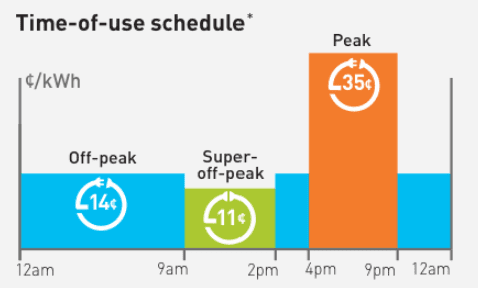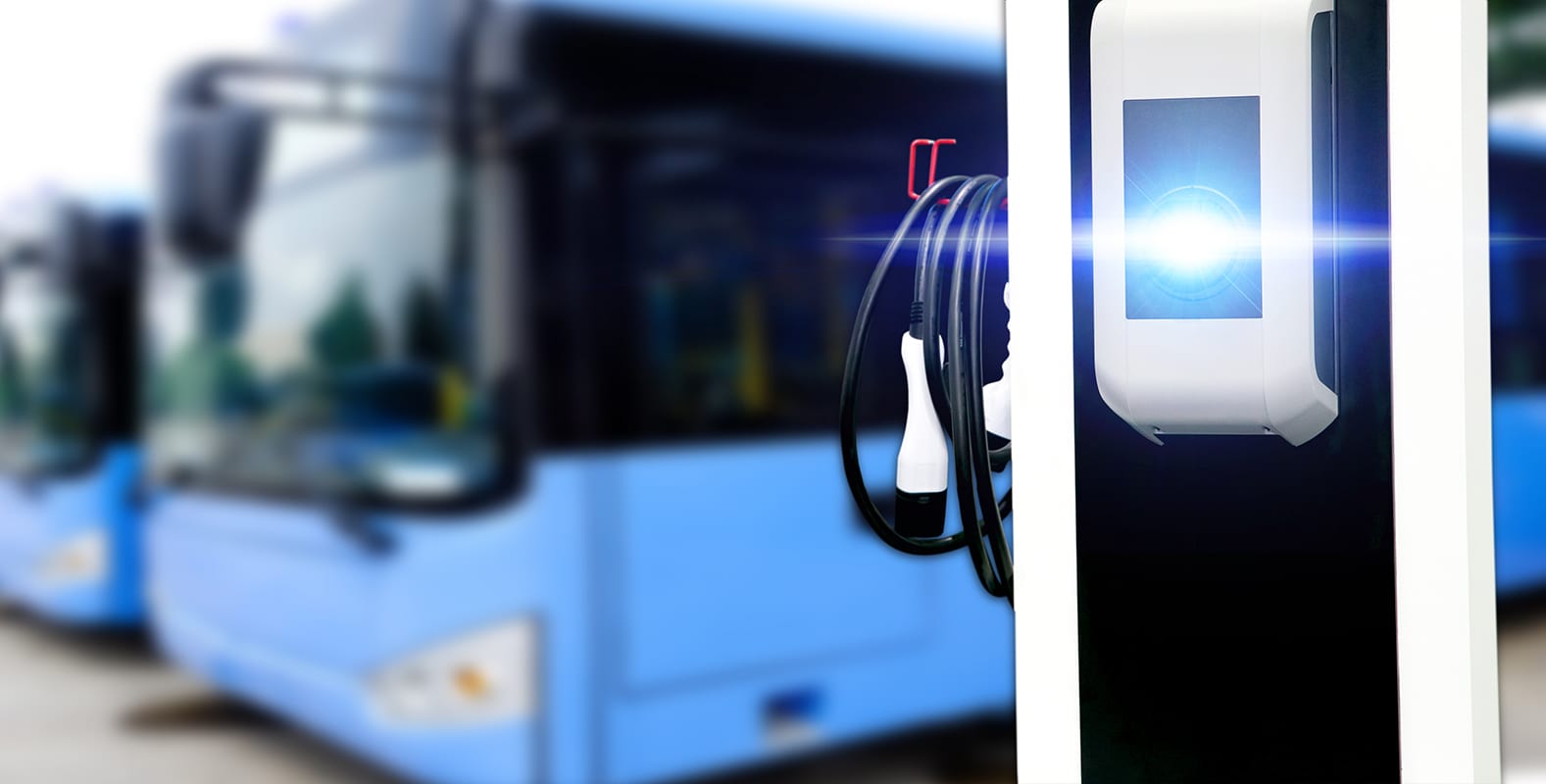In partnership with: Pacific Gas & Electric Company (PG&E)

As fleets look to electric vehicles (EVs) to eliminate emissions, knowing the cost of electricity is an essential factor when calculating total cost of ownership (TCO). While the process for fleets transitioning from gasoline or diesel to electricity may not seem straightforward, or budget-friendly, there are significant cost-saving benefits with using electricity as a fuel-source.
The Business EV rate plans may help keep fuel costs lower than gasoline or diesel.
To make the transition to EVs more cost-effective for fleets, PG&E now offers two new energy rate plans designed specifically for business customers with on-site EV charging. The Business EV (BEV) rate plans may help keep fuel costs lower than gasoline or diesel and simplifies billing. Similar to a cell phone plan, the rates utilize a subscription-based approach depending on the amount of energy a fleet uses, combined with a simplified time-of-use rate that rewards charging during off-peak hours. In addition, the new rate plans eliminate traditional demand charges.

By using this subscription model, fleets can significantly reduce energy costs by 25% to 50% compared to traditional commercial electricity rates. The new rate plans are applicable to all vehicle types, anything from a passenger car to a forklift to a Class 8 truck, which provides flexibility for fleets that operate a variety of on- and off-road EVs. To be eligible for the rates, a fleet must have a separate electricity meter for their EV charging station, or stations. Fleets that participate in PG&E’s EV Fleet program receive assistance installing the required separate meter, making it easy to get started with a BEV rate plan.
How to Choose the Right BEV Subscription Rate
The BEV rate plans offer two subscription options based on the amount of energy a fleet expects to use each month, measured in blocks of kilowatts (kW). Similar to choosing the level of data needed for a cell phone plan, fleets choose a BEV subscription plan to match their estimated monthly kW usage. Fleets are then billed that set amount every month. The kW subscription replaces traditional demand charges, making energy costs more affordable and easier to predict month-to-month.
Fleets can choose from two rate plan options:
- Business Low-Use EV Rate (BEV1): This rate plan is designed for smaller businesses with a load of 100 kW or less and allows fleets to choose their subscription level in smaller, 10 kW blocks priced at $12.41 per 10 kW block. This rate plan is best suited for fleets charging one to two light-duty EVs.
- Business High-Use EV Rate (BEV2): This rate plan is designed for larger businesses with a load of 100 kilowatts (kW) or more. Best suited for most fleets with medium- and heavy-duty EVs and fast-charging stations. A fleet can choose their subscription level in 50 kW blocks, starting at 100 kW. For most BEV2 customers, the price of each 50 kW block is $95.56. For customers receiving primary power via higher voltage transmission lines, the price of each 50 kW block is $85.98 (a PG&E representative can help determine if a site receives primary power).
Similar to choosing data for a cell phone plan, fleets choose a BEV subscription plan to match their estimated monthly kW usage.
Like selecting the level of data for a cellphone plan, fleets choose the amount of kW blocks that most closely represents their actual energy usage. For example, a fleet that subscribes for 150 kW but only use 145 kW, will still pay $286.68 for 150 kW ($95.56 per 50 kW x 3 = $286.68 for 150 kw). At the end of the billing cycle, if the actual energy consumption exceeds the subscription level, the customer will be charged an overage fee of two times the cost of one kW for each kW over the subscription level. Continuing the example above, if a fleet has a 150 kW subscription level, but uses 151 kW in a given billing cycle, they will pay $290.50 ($286.68 for 150 kW + $3.82 for 1 kW).
To help determine the best subscription level, fleets have a grace period with no overage fees for the first three billing cycles after enrollment (or after the addition of more EV chargers). Fleets may also change the subscription level at any time during the month before the billing date.
Understanding the Time-of-Use Rate
In addition to the monthly subscription charge, fleets are charged a time-of-use rate, measured by kilowatts per hour (kWh), based on the time of day the vehicles are charging. These time-of-use periods are based on the cost of energy and support California’s renewable initiatives by promoting energy usage when solar energy is most plentiful.

The new time-of-use schedule is designed to reduce strain on the electric grid when demand is highest—4 p.m. to 9 p.m.—while also providing consistently low rates for a large portion of the nighttime—9 p.m. to 9 a.m.—and part of the afternoon—2 p.m. to 4 p.m. There are even more affordable rates during the super off-peak period of 9 a.m. to 2 p.m. Time-of-use periods are consistent year-round with no seasonality, offering fleets more stability for planning energy costs.
Time-of-use periods are consistent year-round with no seasonality, offering fleets more stability for planning energy costs.
Fleets that can charge their EVs overnight and midday will realize the highest cost-savings. Additionally, installing smart chargers or software to automate a fleet’s charging schedule and measure actual energy usage will help fleets better maximize the time-of-use rate structure.
To learn more about how the BEV rates are structured to save fleets money, watch this recent webinar.
How Much Can a Fleet Save with BEV?
On average, fleets can expect to save up to 50% on energy costs using the BEV rates compared to traditional commercial electricity rates and compared to gasoline or diesel fuel costs.
For instance, a package delivery fleet operating 20 medium-duty electric vans driving an average of 71 miles a day per vehicle, can expect to spend $65,721 on annual electricity costs using the BEV rates. Compared to a cost of $102,525 annually on traditional commercial rates, and $148,259 annually with gas or diesel equivalent, this delivery fleet is looking at 43% and 77% fuel cost savings, respectively.
Fleets can expect to save up to 50% on energy costs using the BEV rates compared to traditional commercial electricity rates.
This fleet is using 12 chargers to power their EVs, charging mostly during overnight and midday off-peak periods, using an average of 34,280 kWh monthly. The price of gas used in this example is $3.46 per gallon, while the average price of electricity on the BEV rate is $0.16 per gallon equivalent, and $0.24 to $0.27 per gallon equivalent on the traditional commercial rate.
The BEV rates present a significant cost-saving opportunity for transit agencies as well. For example, a transit fleet operating 24 electric buses that each drive 150 miles per day, can expect to spend $50,558 on the BEV rates versus $90,437 on the traditional commercial rates, which is about 25% savings on energy costs. This fleet uses 12 chargers and is charging mostly overnight to avoid peak hours.
Transit agencies often receive reduced gas or diesel prices to encourage the use of public transportation, so these fleets may experience nominal savings over the gas or diesel equivalent. However, due to the mandates set by the state for transit fleets to meet zero-emission requirements, transit fleets are increasingly looking to EVs now and in the near future and will benefit from the BEV rates to further reduce the cost of electrification.
Use PG&E’s new EV Fleet savings tool to see real-life cost-savings based on your fleet operations.
Using Backup and Solar Energy to Further Increase Savings
Fleets can use solar and backup energy generation along with the BEV rates, which may allow customers to further reduce costs by using renewable energy and maximizing off-peak charging periods. As long as the solar or backup power generation is charged on a separate meter from the one used for the fleet’s EVs, customers can use these additional energy sources to charge during peak periods.
Fleets may also use the backup energy during power outages or Public Safety Power Shutoffs. To learn more about how to setup backup energy storage for fleets watch this recent webinar.
Start Saving with PG&E’s BEV Rates
To enroll in PG&E’s BEV rate program, fleets must be a commercial customer with onsite EV charging infrastructure and located within PG&E’s service territory. As previously mentioned, fleet customers must also have a separate meter installed that is connected to the EV charging stations– meaning the same meter cannot be shared with other uses such as building power or irrigation.
The easiest way to get setup for the BEV rates is to take part in PG&E’s EV Fleet program.
For fleet customers just beginning their electrification journey, or looking to add EV fleet charging stations, the easiest way to get setup for the BEV rates is to take part in PG&E’s EV Fleet program. In addition to receiving assistance setting up the required separate meter, EV Fleet customers are eligible for incentives and rebates that significantly reduce the cost of installing new EV charging infrastructure as well as design support that will further streamline project timelines and costs.
To learn more about how to save with PG&E’s BEV rates and the EV Fleet program, connect with an EV Fleet specialist by submitting an interest form here or by visiting pge.com/evfleets.


